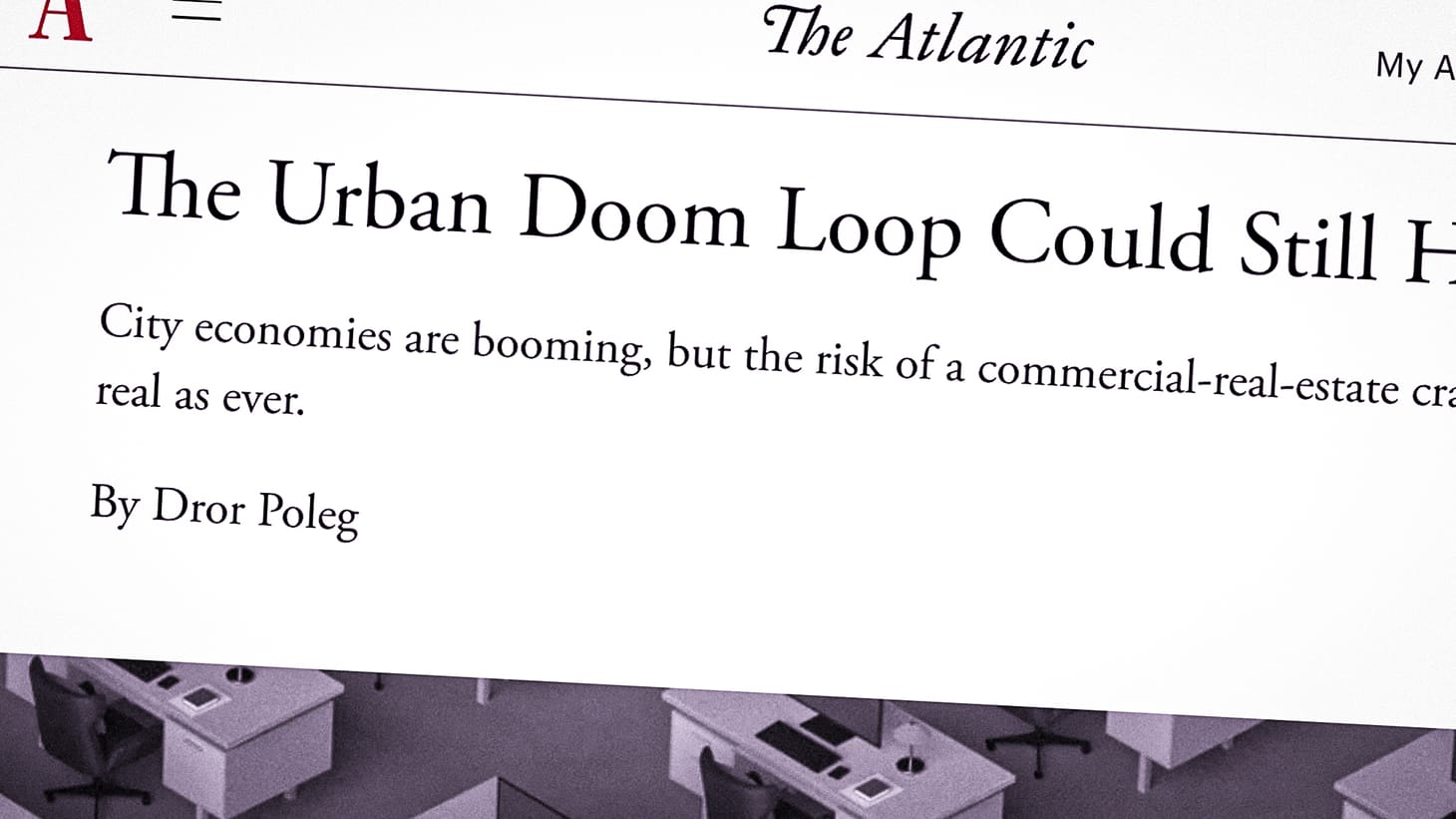The Problem with Cities

"The relationship between economic activity and office demand has changed forever." My latest piece for The Atlantic explores the broken relationship between economic prosperity and cities. In the past, a growing economy, booming markets, and low unemployment meant offices were full and cities were doing well. Today, this relationship is broken.
Too many city leaders, landlords, and employers assume that if economic indicators are good, cities will be fine. But that's no longer true. To truly recover, cities must diversify their economic base, streamline the construction and conversion of new housing and mixed-use neighborhoods, enhance public services, and double down on what makes urban life attractive in its own right — not just as an employment destination. They must do so with a sense of urgency.
Read the full piece here.
Extra Pieces
Some additional data and perspectives that did not make it to the final piece and might be of interest to my readers.
- Recession Expectations:
I mentioned the NAIOP model for predicting office demand. This model could predict and explain office demand based on economic data going back to the 1990s — when GDP and employment were healthy, so was office demand. But around 2022, that correlation started to diverge.
As part of my research, I chatted with Dr. Joshua Harris, Executive Director of Fordham University’s Real Estate Institute and one of the developers of the original NAIOP model. Josh and his colleagues are also exploring the recent divergence between economic data and office demand. One possibility is that negative expectations about the future are overwhelming positive data about the present. Even though the “100% recession” of 2023 did not materialize, many companies are still in “recession planning mode,” according to Harris. High interest rates and softer — but still solid — GDP and employment readings prevent companies from taking on new space.
The original model, which was developed nearly a decade ago, did not take into account the impact of remote work on the relationship between economic activity and office demand. These days, Harris sees remote work as an enabler of a new form of hedging: Twenty years ago, companies would lease new space to make room for projected growth. Today, says Harris, “it’s more natural to hire people even if you have no space for them.” In a market with a lot of vacancies, employers do not feel any urgency to make upfront commitments.
- The Housing Market:
The housing market also reflects long-term plans to spend less time at the office. On average, Americans now live much farther away from their workplace than they did pre-pandemic. This is particularly true for high-paid employees in the technology and finance sectors. Data from Gusto, a payroll processor, shows the mean distance from residences to offices rose from around 10 miles in 2019 to 27 miles in 2023. In addition, tech jobs are now distributed in more locations across the country, and even booming California has fewer of them than pre-Covid. This means that even people who want to go to an office are not necessarily within commuting distance of available spaces. Even employees who stayed within the same metro area have made choices that reflect plans to spend less time at the office.
- Over to you: What do you see in your own city, company, and research? Let me know.
And don't forget to check out the original piece in The Atlantic. Please share it with anyone who might be interested. Thank you.
Have a great week,

Old/New by Dror Poleg Newsletter
Join the newsletter to receive the latest updates in your inbox.

